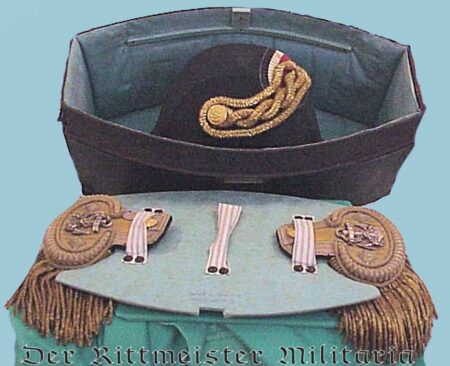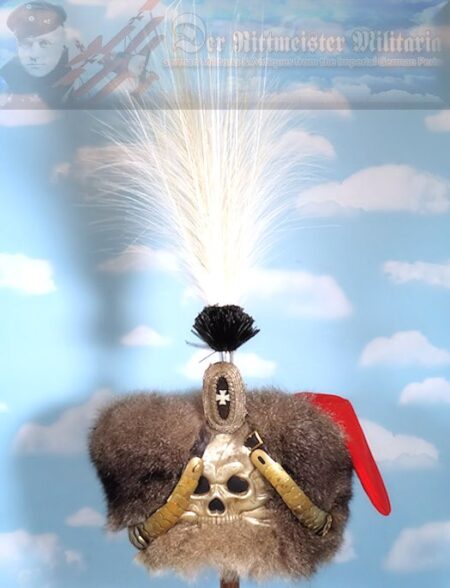Description
This is a high-quality NCO’s feldgrau schirmütze from Küraßier-Regiment Graf Geßler (Rheinisches) Nr 8. The elite regiment was founded in 1815, and was garrisoned at Deutz. It was assigned to the VIII. ArmeeKorps. The visor cap sports a wide medium-to-light-blue band measuring 1 7/16″ in width. It also displays a total of three white piping bands, one each above and below the blue band, and one encircling the cap’s crown. The NCO’s Reich and state’s kokarden are present at the schirmütze’s front. Some paint chipping shows on the state kokarde. The cap’s bulk ( specifically, the cover) is feldgrau. Some very light moth tracking appears on the side and at the top, but it is VERY limited. Inside the cap is a complete, well used brown leather sweatband. The liner is made of light-red polished cotton rather than the silk we generally find in officers’ schirmützen. Feldgrau schirmützen are very difficult-to-find, as too often they saw hard use during WW I. This is especially true of Hussar and Küraßier schirmützen








